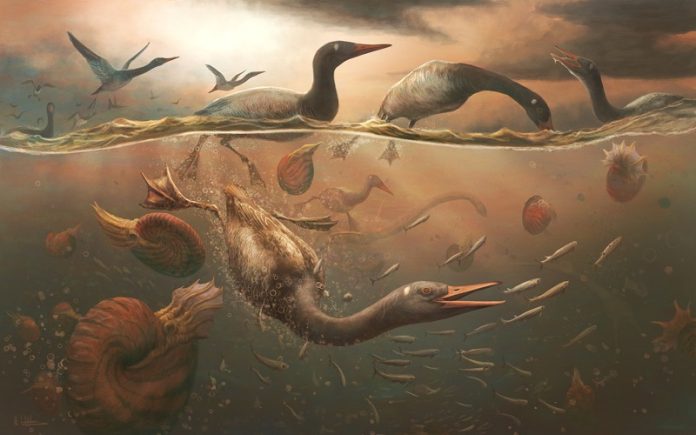
Scientists have made an exciting discovery—a 69-million-year-old fossil found in Antarctica is the oldest known modern bird.
This ancient bird, called Vegavis iaai, was an early relative of ducks and geese, proving that modern birds were already evolving before the mass extinction event that wiped out the dinosaurs.
At the end of the Cretaceous Period, about 66 million years ago, an asteroid struck Earth, causing a mass extinction that wiped out all non-bird dinosaurs.
However, some birds survived, including early ancestors of today’s waterfowl.
Scientists believe that Antarctica may have acted as a safe place for these birds, far away from the destruction caused by the asteroid impact. At that time, Antarctica had a much warmer climate with forests and rivers, making it a good home for early birds.
A new study published in Nature describes a nearly complete skull of Vegavis iaai, collected in 2011 from Antarctica.
This fossil provides the strongest evidence yet that modern birds existed alongside dinosaurs.
The research was led by Dr. Christopher Torres, a scientist from Ohio University and now a professor at the University of the Pacific.
For years, scientists debated whether Vegavis was truly a modern bird. When it was first reported 20 years ago by Dr. Julia Clarke from The University of Texas at Austin, it was considered a possible early member of waterfowl.
However, because modern birds are very rare in the fossil record before the mass extinction, some scientists doubted this claim. Now, with the discovery of this well-preserved skull, those doubts can be put to rest.
The new fossil has important features that prove Vegavis was a modern bird. Its skull has a long, pointed beak and a brain shape similar to today’s ducks and geese. However, it also had some differences from modern waterfowl.
For example, Vegavis had strong jaw muscles, which likely helped it catch fish underwater. Its skeleton suggests that it used its feet to swim, similar to modern grebes and loons rather than ducks and geese.
“This fossil is going to answer a lot of questions about Vegavis,” said Dr. Torres. “It confirms that it belonged to the group that includes all modern birds.”
Antarctica is a key location for understanding bird evolution. While other parts of the world, like Madagascar and Argentina, had birds with teeth and long tails that looked very different from today’s species, Vegavis was already showing modern features. This suggests that something unique was happening in Antarctica that helped modern birds evolve.
“This fossil proves that Antarctica has an important story to tell about the early days of modern birds,” said Dr. Patrick O’Connor from Ohio University. “It also shows how much we still have to learn about life during the Age of Dinosaurs.”
The discovery of Vegavis iaai is a big step in understanding how modern birds evolved and survived the mass extinction. Scientists will continue to study fossils from Antarctica to learn more about how life adapted after the asteroid impact.
“This study is a great example of how fieldwork and research help us understand Earth’s deep history,” said Ohio University President Lori Stewart Gonzalez. “It also highlights the importance of teamwork among students, scientists, and researchers from around the world.”
As scientists continue to uncover ancient fossils in Antarctica, new discoveries may reveal even more secrets about how birds conquered the planet after the age of the dinosaurs.
Source: KSR.



